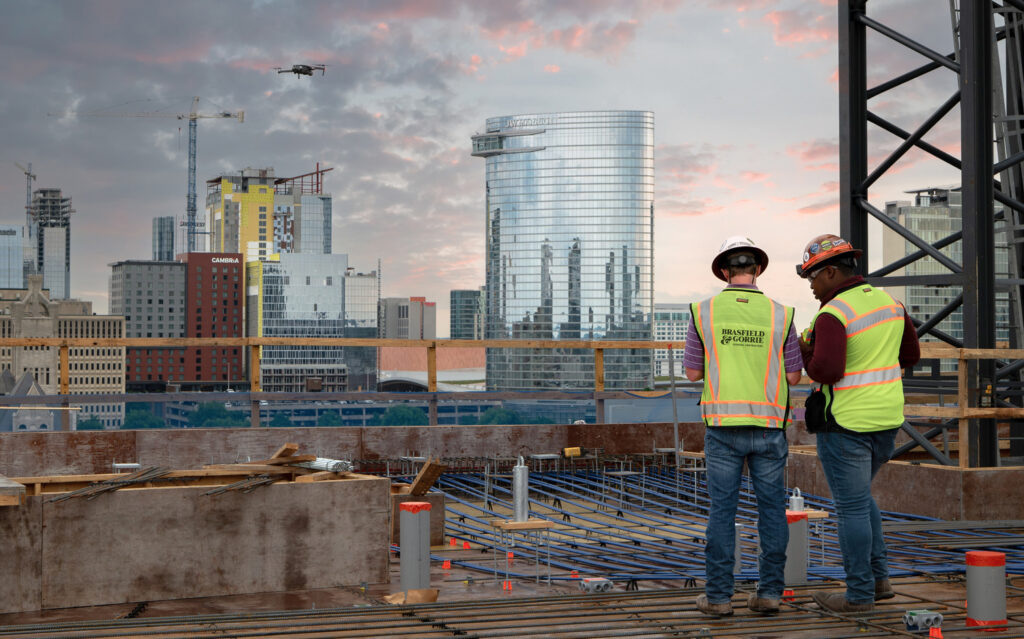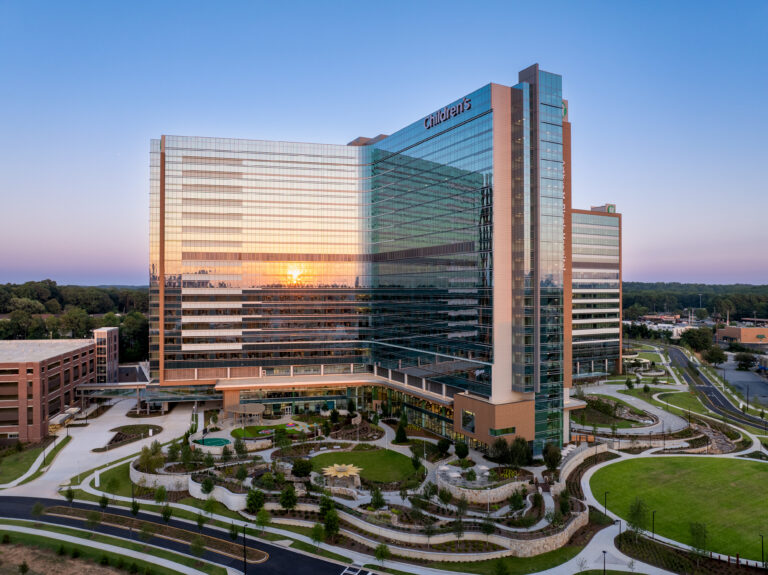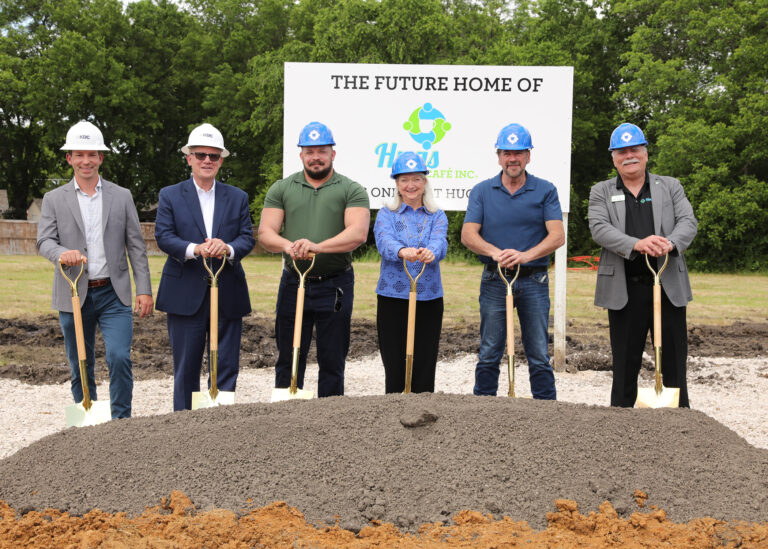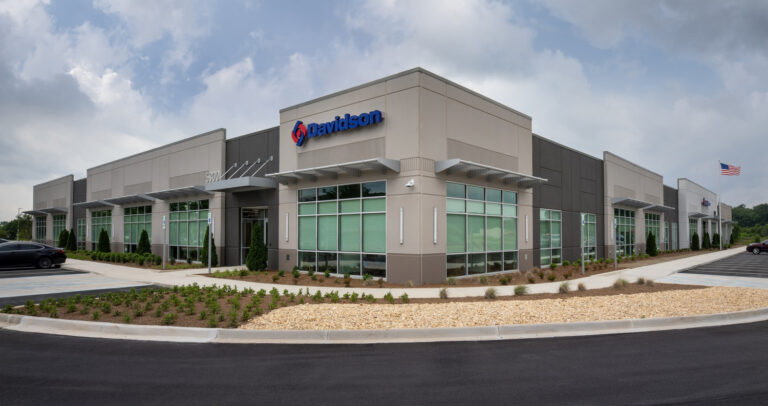- Commercial
- Healthcare
4 innovative approaches to improving self-perform concrete
September 22, 2022

At Brasfield & Gorrie, innovation is one of our values, and that includes improving our self-perform strategies in every scenario that we can. More than 70 percent of our projects involve some sort of self-performance. Much of our focus has been on self-performed concrete, and this process has been improved recently thanks to ongoing collaborations between our field teams, Virtual Design + Construction (VDC) Department, and Preconstruction Department.
“VDC on ONE22ONE in Nashville was nothing short of essential,” said Assistant Superintendent Mack Wheeler. “With the 3D models and line drawings, you greatly reduce the risk of running into future problems. . Having a clear vision of what things are going to look like helps you plan better for what you need.”
Here are some of the ways our company has increased efficiency and safety on our jobsites.
Preconstruction Planning
The VDC Department’s role during preconstruction is gathering all available information into one centralized 3D model. This allows our team to better visualize the project and identify how it should be constructed. Using tools like Revit, Assemble Systems, and Destini Estimator, we create building information models (BIM) that communicate the current state of a job and what it will look like at specific points in the future. With this information, our Preconstruction Department can better identify and solve problems before they arise. Understanding issues during the preconstruction stage gives project teams an increased level of confidence in the estimate. By utilizing BIM, cost, labor, and constructability are all more accurately accounted for.
“If you catch a problem just by looking at the model, you’ve brought that issue to the surface way sooner, which means you have significantly more time to solve it,” said Regional VDC Manager Shawn Mancill.
Onsite Planning
Increased visibility into the project during preconstruction planning results in increased efficiency and trust in the field. We are not creating more work for our field teams—we are allowing them to trust the plan and improve the process during construction. The emergence of dedicated onsite VDC managers has greatly improved trust and increased productivity in this process, which must be a collaborative effort involving our field teams and field engineers. By working together to create a single source of truth from which we install and hold trades accountable, we can ensure quality and accuracy throughout construction. Once completed, these models can also be used for many other purposes, including 3D visuals for on-site safety orientation. These use cases proved very helpful on jobsites such as 760 Ralph McGill and Marcus Tower at Piedmont Atlanta Hospital.
“Being on site for self-perform drawings has been very helpful,” said VDC Manager Davis Brooks. “It allows us to talk with superintendents, field engineers, and project managers face-to-face and really see what they’re looking for.”
Shop Drawings
Our VDC Department has developed a variety of programs that help expedite shop drawing creation. These programs automate repetitive tasks including duplicating views, creating sheets, and generating model filters. They have also developed a series of scripts that automate the modeling of formwork for concrete structures. These scripts analyze the 3D model and generate fabrication-level formwork shop drawings. Automating these tasks increases efficiency as we prefabricate formwork components in a controlled offsite environment for safer working conditions.
“With the push of a button, we can do things in minutes and seconds that used to take hours and days,” said VDC Manager Zach Rodgers. “This allows us to keep costs down and drive project schedules.”
Onsite Photo Capture
As the project moves from planning to the execution phase, our teams use innovative technologies such as drone flights, 360 cameras, jobsite walks with OpenSpace, and laser scanning to document and track the installed quantities. Before the concrete pour, when all elements are exposed, our project teams can execute drone flights that create detailed, high-resolution maps of each pour section that can overlay onto shop drawings using software like DroneDeploy. In certain situations, when drone flights aren’t possible, OpenSpace 360-degree cameras can maintain our tracking efforts. This process allows our project teams to increase quality control efforts onsite with the added benefit of sharing progress reports with division managers and others.
“These aerial images really pay off when it comes to catching major mistakes,” said VDC Manager Pauline Schoech. “It’s a great check to see if anything is off that would require delaying a pour.”
Brasfield & Gorrie supports training and education for these processes, including classes and presentations geared toward superintendents, project managers, and preconstruction managers. From the drawing board to the finish line, we’re always looking for opportunities to improve our practices through innovative techniques.
Related


